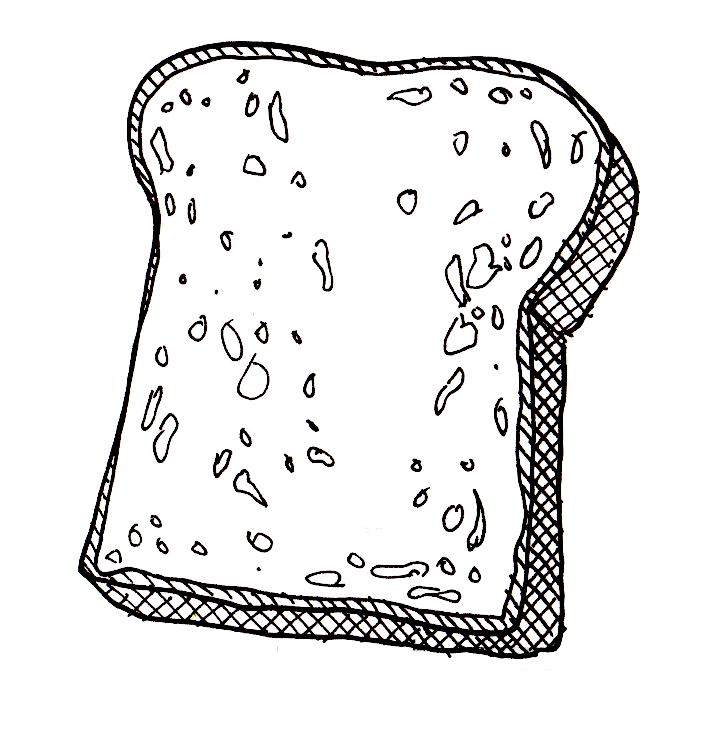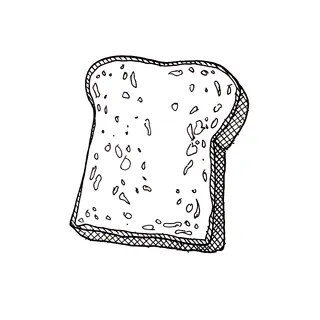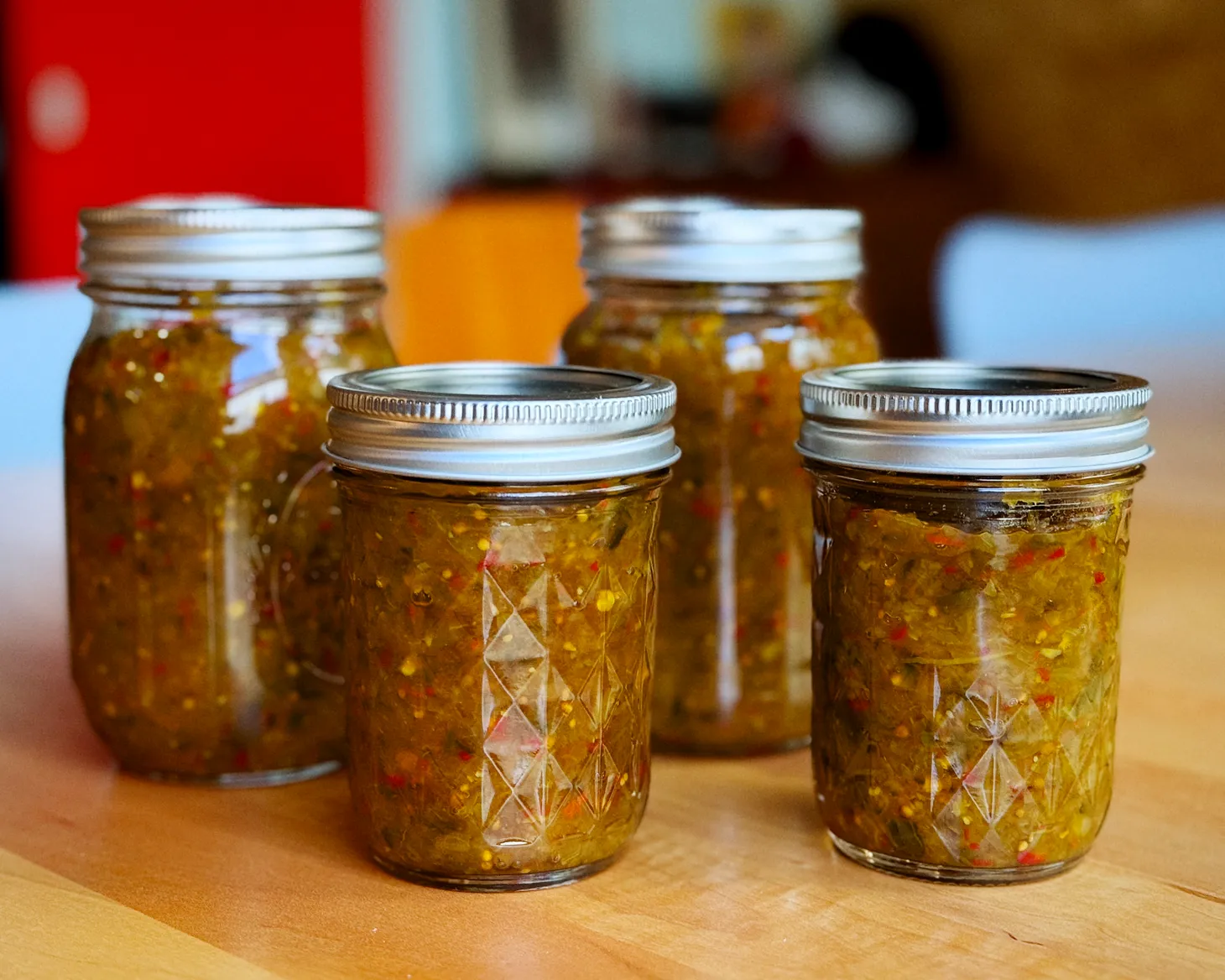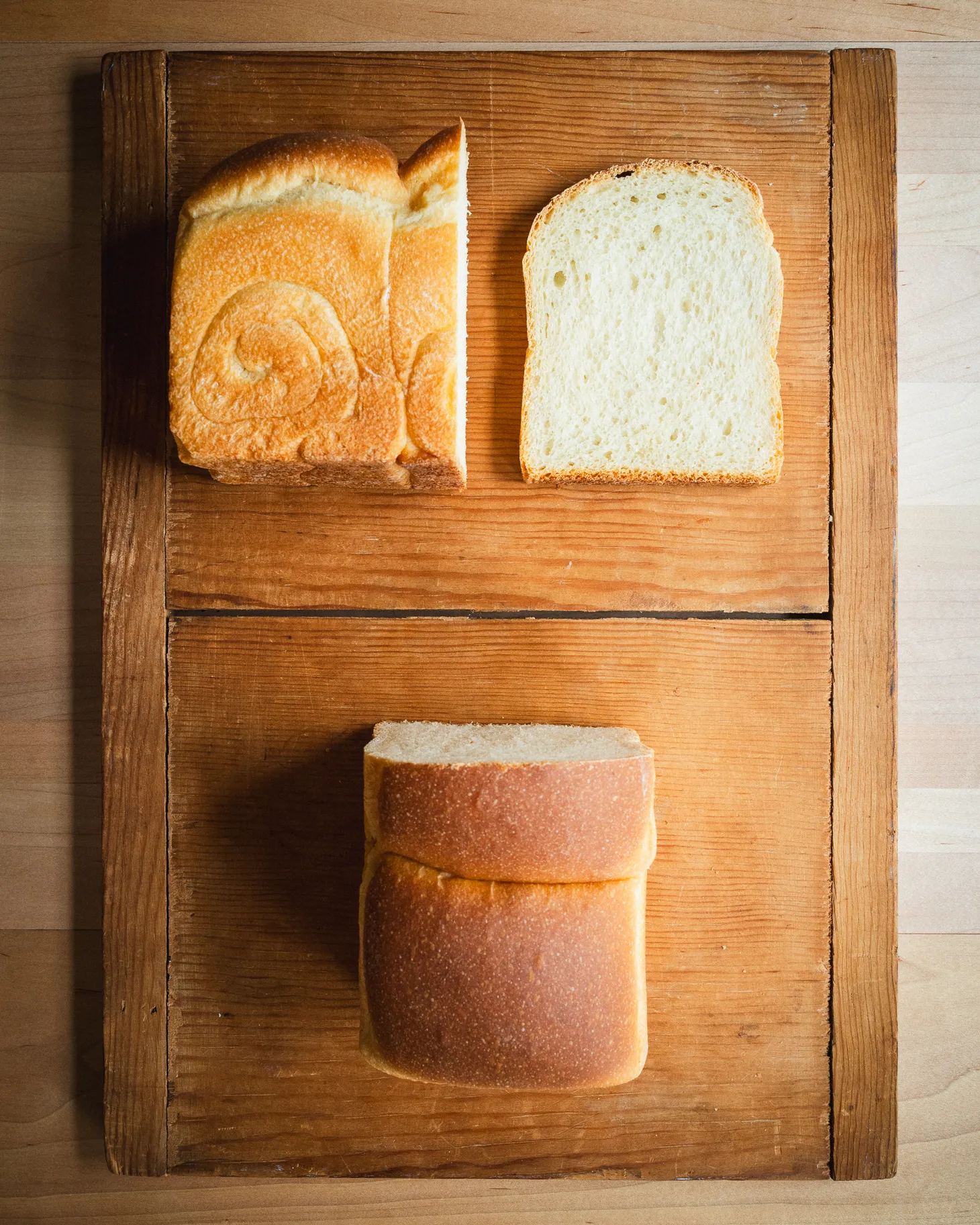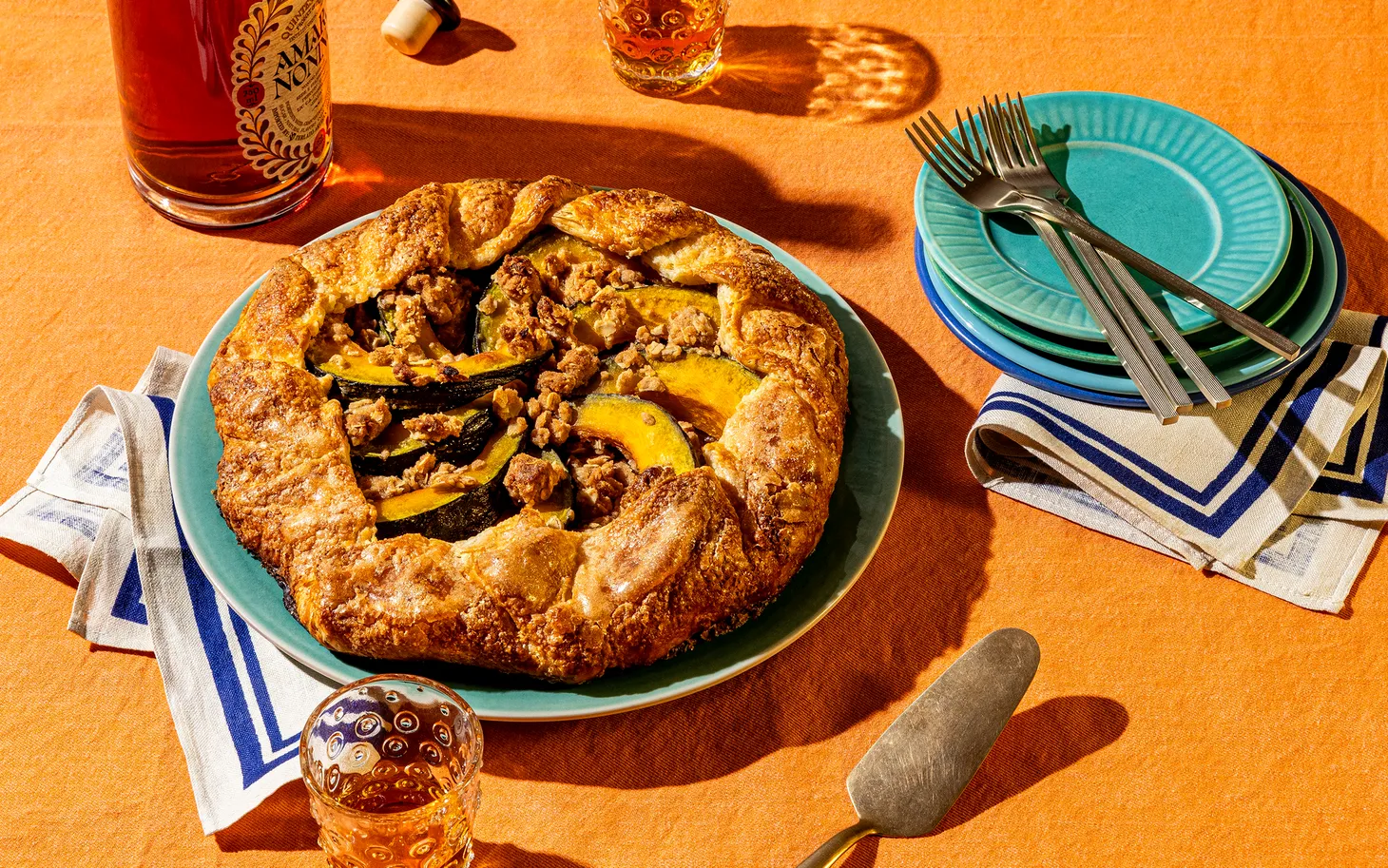Recipe Update: Sourdough discard English muffin bread
The Final Cut (🤞)
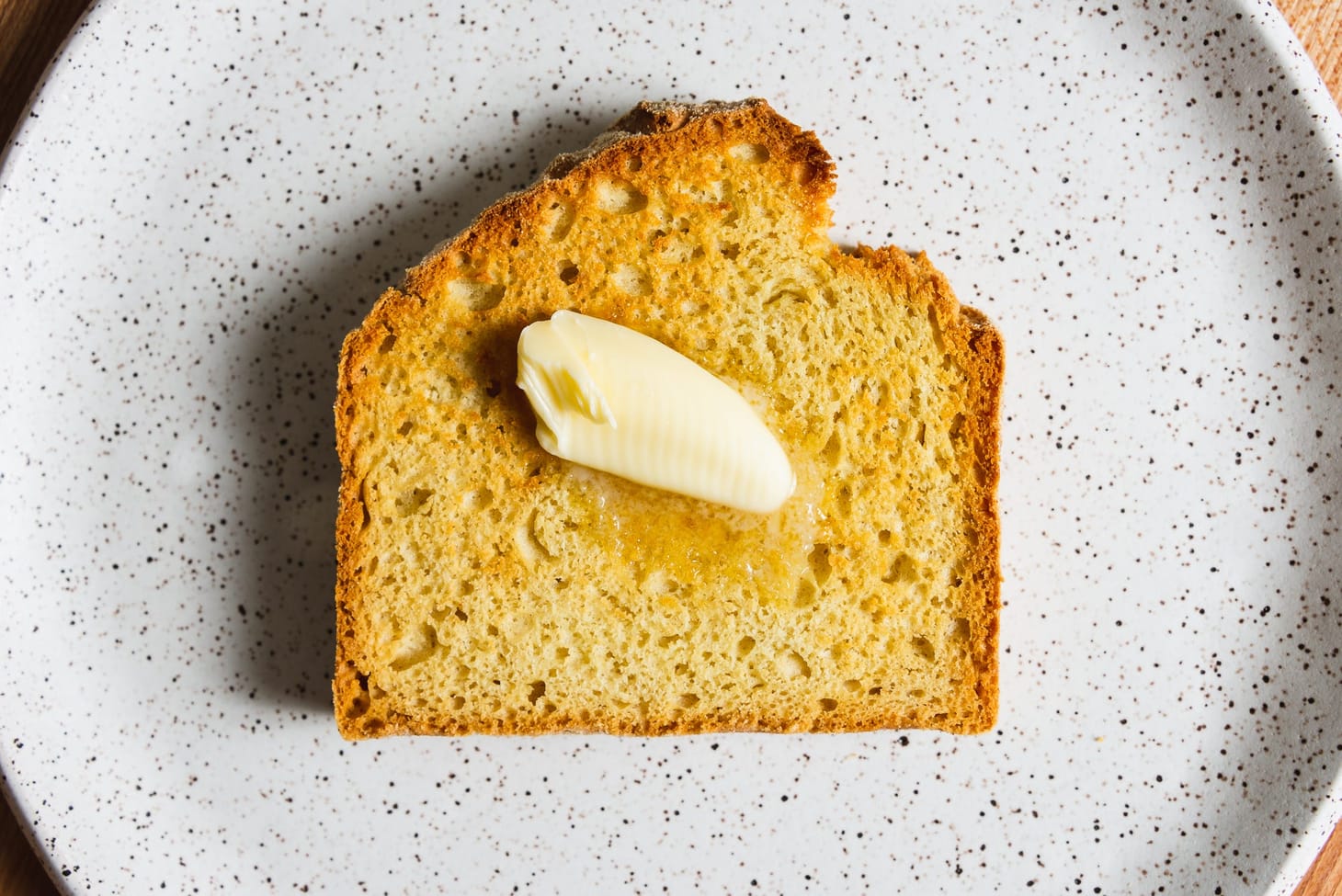
Table of Contents
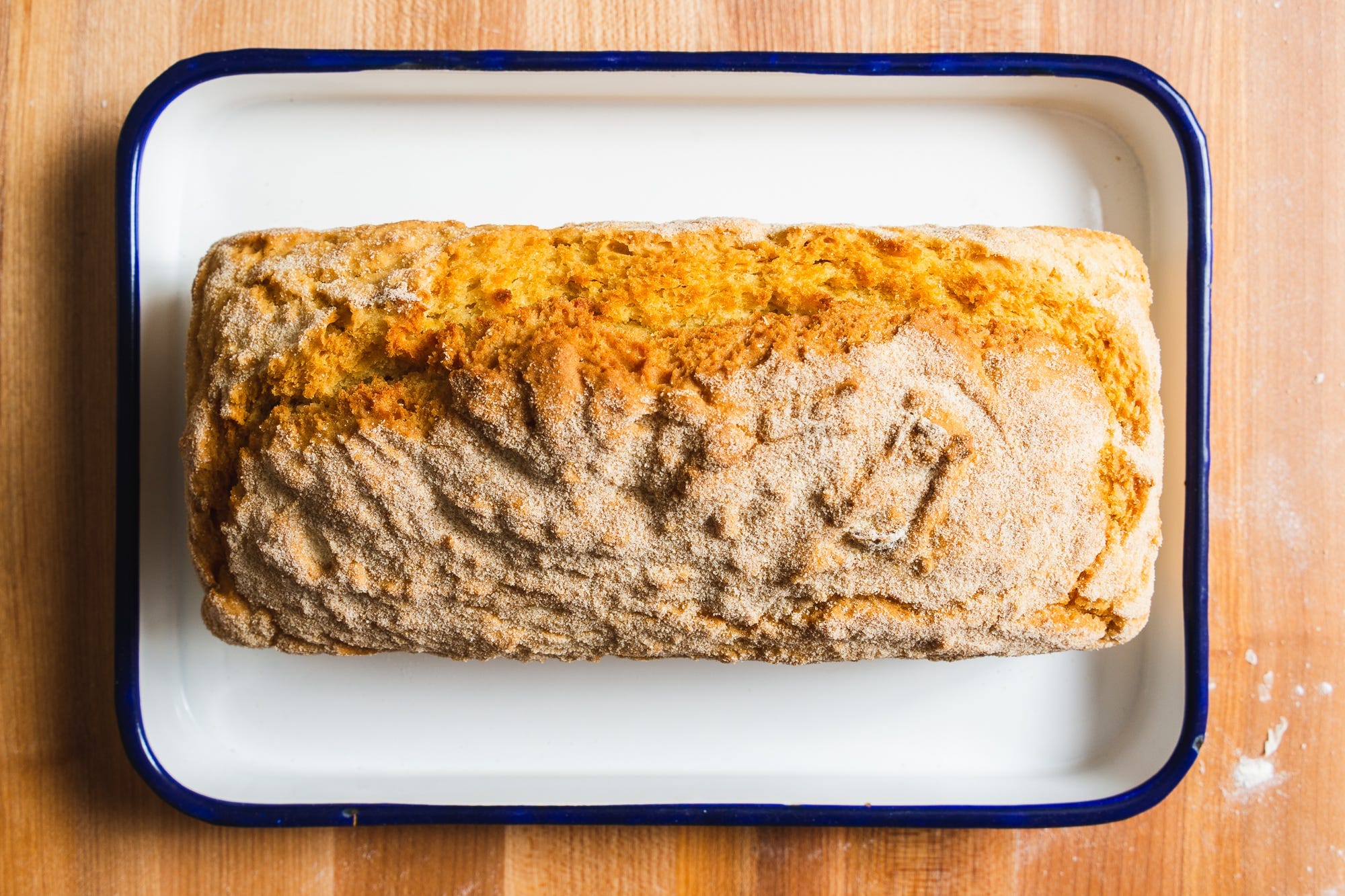
I shared the first version of this recipe here way back in October 2020:
I’ll let you read the details on what inspired it there, but here’s the basic idea: It began as an attempt to devise a recipe that used a pile of sourdough discard all at once, to clear it out of my fridge whenever there’s an excess. I’m not a huge fan of most recipes that call for “sourdough discard”, since most of them don’t use enough of the stuff to clear it out of my fridge quickly. (Seriously, some recipes use what is more like a “homeopathic” amount of discard relative to the total amount of flour in the recipe.)
One recipe that fits the bill for me is my sourdough discard granola (which I just made available for everyone here, BTW), which uses discard as a binder. But I wanted a bread, and that required something that could stand to to have a lot of prefermented and probably pretty degraded (gluten-wise) flour in it. I figured the best bet would be a batter bread, baked in a pan, since a loose batter would allow for a large amount of discard and allow the crumb to open up well, and the pan would allow for a loose dough to be baked into a loaf. I’d always been a fan of James Beard’s English muffin bread, and it turned out to be a perfect choice here.

Or it was, except when it wasn’t. It’s a simple recipe, but for some reason it’s also been one that has resisted nailing down. When I first concocted it, it worked perfectly in my hands, and I loved it. But it did not seem to work for everyone reliably, and there didn’t seem to be much consistency in why it failed when it did. (Annoyingly, all three previous versions worked just fine for me!) Despite its flaws, this has always been a very popular recipe, so I kept mucking with it and sharing new versions each time I thought I’d “fixed” things. Here’s the sequence of versions I sent out:
- The original recipe used sourdough discard plus baking soda as the leaven. The batter sat for 60 to 90 minutes before being tipped into the pan, which TBH I was always a little skeptical about, since it didn’t seem long enough for sourdough (especially some blah discard) to wake up, so most of the bounce really came from the chemical reaction of the soda with the acids.
- Version two saw the addition of dry yeast to give the dough some actual fermentation, plus a proof in the pan, so that any rise that is achieved isn’t compromised by transferring the dough after the fact; a new mixing method to ensure the baking soda is evenly distributed throughout the dough; and temperature control to be sure the batter is warm enough to proof quickly. For whatever reason, this version was the least successful.
- Version three was an attempt to right the ship by removing the yeast and eliminating the proofing step altogether. This one was definitely better (especially since it incorporated some of the improvements in version two), but still a few people had problems.
- This new version, which I and others have made a bunch of times, is a return to most of the elements of version two, since that was my favorite one, plus a few refinements: A little more liquid, for a looser batter; 2 tablespoons melted butter, for tenderness; and, maybe most importantly, the use of a covered Dutch oven for baking it, since I think that the loaf benefits from steam to give maximum oven spring. It is definitely not necessary, given how many people have had great success without it, but it also doesn’t hurt if you have a pot large enough to accommodate your loaf pan comfortably.
I use a Challenger Pan to bake mine, but if you have a round Dutch oven, here’s a picture that shows how to make a sling out of parchment paper to make getting the pan in and out of the pot easily:
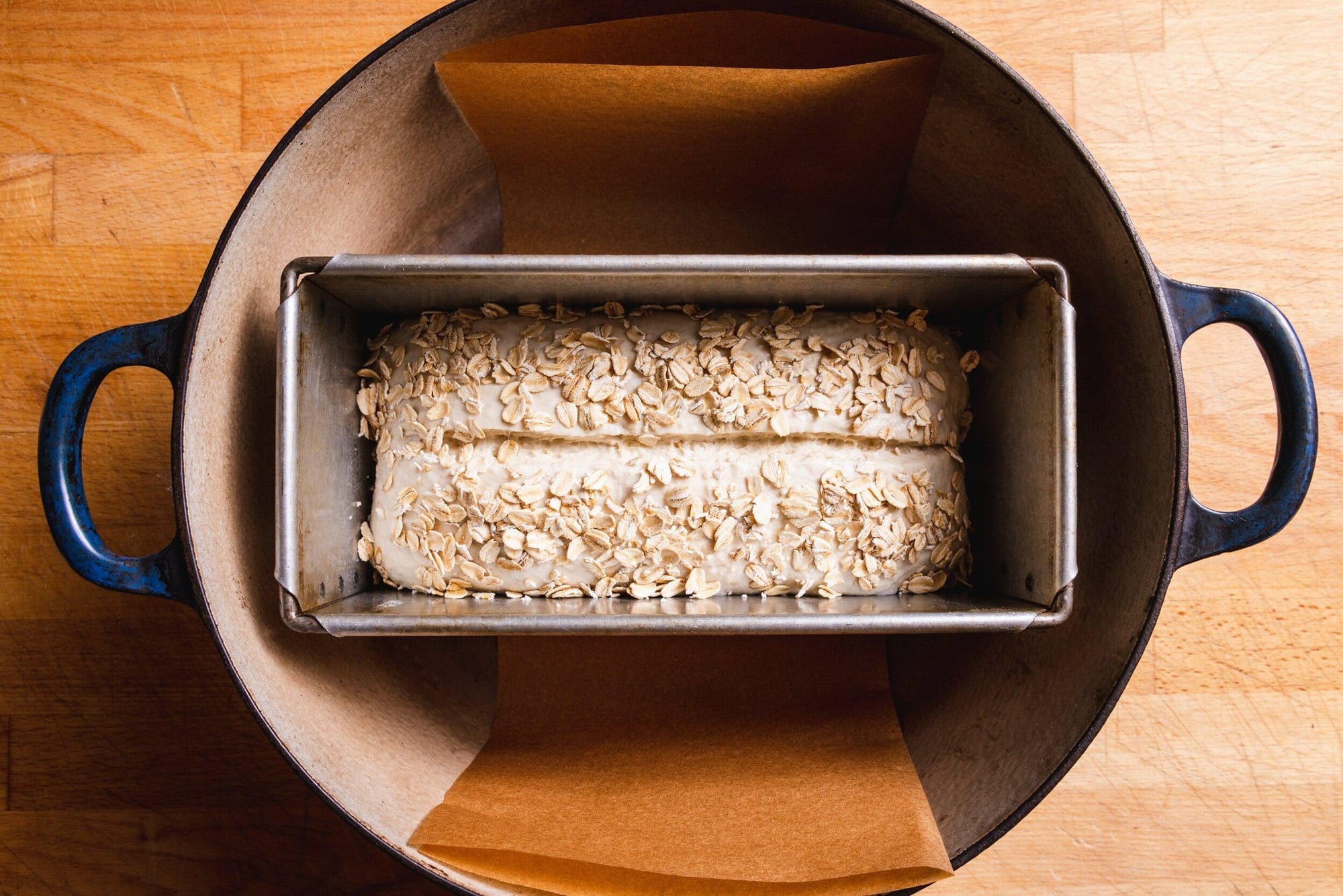
I’m hoping—for everyone’s sake—that this is the definitive version of the recipe, but I’ve learned through all of this to never say never anymore. Please let me know how it works for you, and/or if you have any questions.
—Andrew

Sourdough Discard English Muffin Bread

Sourdough Discard English Muffin Bread The Final Cut945KB ∙ PDF fileDownloadDownload
Makes one 800g pan loaf
- If you don’t have 400g (about 1 ¾ cups) of discard on hand, make a levain from scratch instead, as described in step 1. (Full disclosure: This recipe is even better when made with fresh levain.)
- If you don’t have a Dutch oven large enough to hold the loaf pan comfortably, just bake it in the oven instead at 375˚F (190˚C) for 35 to 40 minutes. Most people find it works just fine that way.
- Use bread flour if you have it, the extra protein will help offset the weakness of the gluten in the sourdough discard.
- Feel free to substitute up to 25% of the flour in the dough with a whole-grain one. The decrease in volume will be more than offset by the boost in flavor.
- Be sure to adjust the temperature of the milk in step 2 depending upon whether you are working with cold discard or room-temperature levain.
OVERALL FORMULA
bread flour 100%
water/milk 80%
unsalted butter 7%
sugar 3%
salt 2%
baking soda 1.5%
yeast 1.5%
levain 100%
prefermented flour 50%
LEVAIN (if needed)
160g flour
160g water
80g 100%-hydration starter
DOUGH
cornmeal or semolina, for dusting pan and top of loaves
200g bread flour
12g (1 tablespoon) sugar
8g (1 ⅛ teaspoon fine) salt
6g (1 ¼ teaspoons) baking soda
6g (1 ½ teaspoons) instant or active dry yeast
400g 100%-hydration sourdough discard (or all of the levain, from above)
160g milk or plant milk (about 130˚F / 54˚C if using cold discard; 80˚F / 27˚C if using room-temperature levain)
28g (2 tablespoons) unsalted butter, melted (or oil)
- LEVAIN (if needed): Stir the flour, water, and starter until uniform and proof at 78˚F until at least doubled in volume, 4 to 8 hours.
- DOUGH: Adjust an oven rack to the lower-middle position, set a Dutch oven *(one that fits your loaf pan comfortably, with the lid on, and with room to spare)* on the rack, and heat the oven to 400˚F (205˚C). Grease a 9x5-inch-ish loaf pan (preferably metal for maximum conductivity) and coat liberally with cornmeal or semolina on all sides.
- Whisk the flour, sugar, salt, baking soda, and yeast in a bowl until well combined, about 15 seconds (or sift it through a sifter). Place the milk, butter, and discard or levain in a second bowl and whisk until smooth. Add the dry mixture to the wet and beat vigorously with a dough whisk or wooden spoon until stiff and bubbly. Tip into the prepared pan and level the dough with a spatula. Cover loosely and let sit for 45 minutes.
- BAKE: Dust the top of the loaf liberally with cornmeal or semolina. Carefully transfer to the Dutch oven, cover with the lid, and bake for 20 minutes.
- Carefully remove the loaf from the Dutch oven and transfer to the bare oven rack. Continue to bake until the bread is golden-brown on top and registers at least 200˚F (93˚C) at the center, 15 to 20 minutes longer.
- Transfer the pan to a rack and let cool for 5 minutes. Remove the loaf from the pan and return to the rack. Let cool at least 2 hours before slicing (and toasting—this bread is so moist that it is actually *improved* by toasting, even when freshly-baked).
wordloaf Newsletter
Join the newsletter to receive the latest updates in your inbox.
